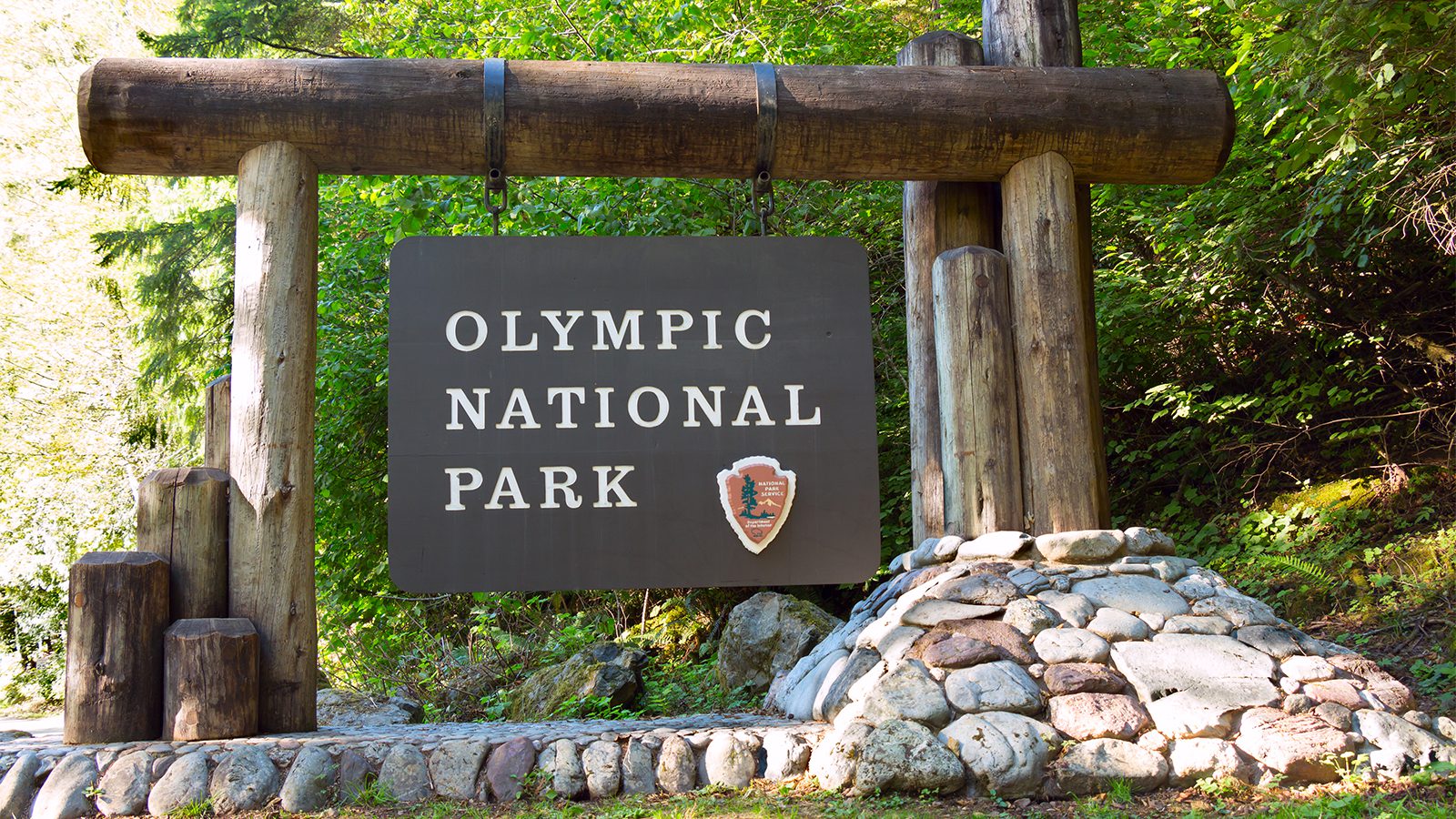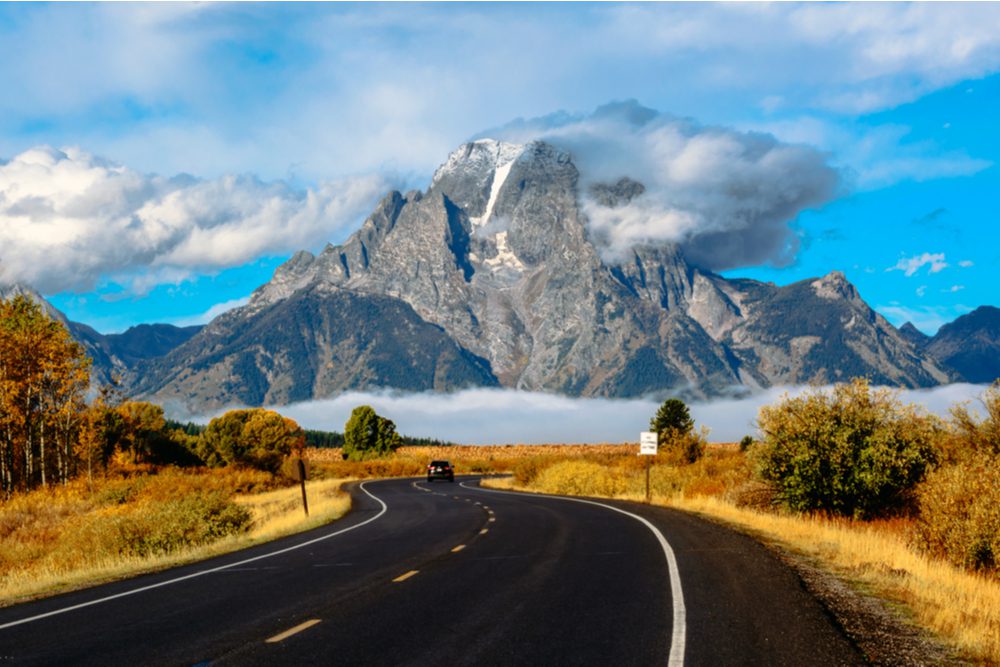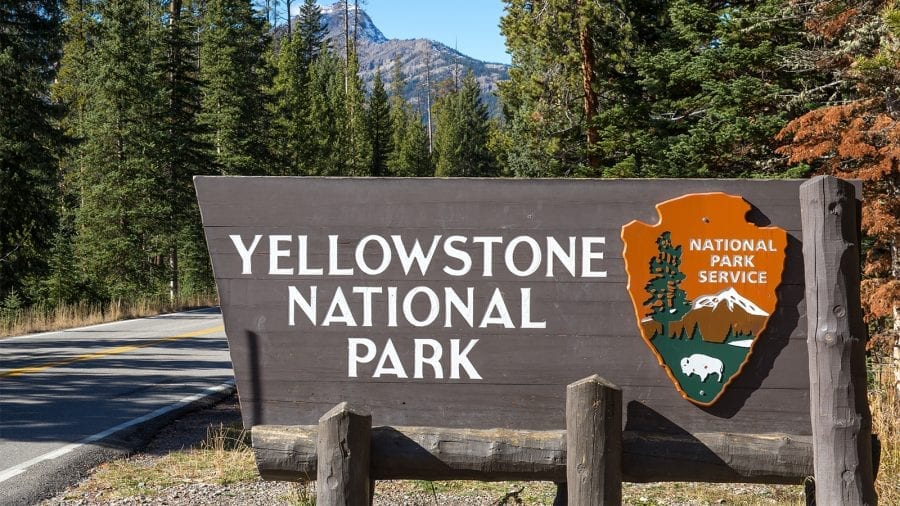
Yellowstone National Park Quick Facts
Here are some quick facts about Yellowstone National Park.
- Established : 1872
- Land Size : 2.2 Million Acres
- Annual Visitors : 4 million
- State : Wyoming
- Entrance Fees : $20 per person, $35 per vehicle
More Reading :
Page Contents
Where is Yellowstone National Park?
Yellowstone National Park is located almost entirely in Wyoming with very less than 5% of the park located in Idaho and Montana. The park is accessible via two entrances: an entrance located just north of Jackson and an entrance east of Cody.
Bozeman, Montana, which is about 80 miles north of the park, is the largest nearby city.
What is Yellowstone National Park famous for?
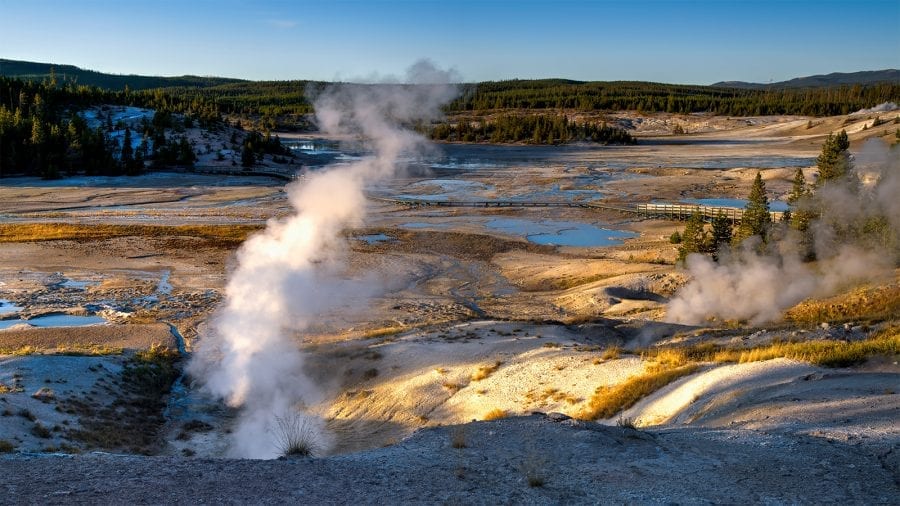
Yellowstone National Park is perhaps best known for its geological and geothermal features.
It is also the first national park in the world.
Several geyser basins are located in the park, with the most active being Norris Geyser Basin and the most famous being Upper Geyser Basin, which is home to Old Faithful. Other geothermal attractions include the popular Mammoth Hot Springs.
Yellowstone is also known for one of its most interesting geological features: the Grand Canyon of Yellowstone, which features the 100-foot Yellowstone Falls.
What is the best month to visit Yellowstone National Park?
As one of the park’s shoulder months, expect to encounter much smaller crowds than you would in the peak summer months, which can see huge crowds at the park’s most popular attractions.
By September, the crowds have thinned as kids head back to school. And while the weather does begin to turn cooler as autumn approaches, daytime temperatures still rise well into the 60s, making it warm enough to enjoy the park and take advantage of the many opportunities to view the park’s wildlife.
What to do in Yellowstone National Park?
How many days do I need in Yellowstone National Park?
It really takes four or five days to really explore Yellowstone National Park.
Part of this has to do with the sheer size of the park, which adds a significant amount of driving time between attractions. That said, sometimes you may only have a weekend to spend in the park.
Two days (short trip)
A two day trip affords you enough time to see the park’s main geothermal attractions. Begin on day one by going to the most famous one; Old Faithful Geyser in the Upper Geyser Basin.
While you’re there, stop by the breathtaking Morning Glory Pool, also located in the Upper Geyser Basin. Continue on to visit Mammoth Hot Springs and Boiling River.
On day two, continue your tour of Yellowstone’s highlights with visits to Yellowstone Grand Canyon, Hayden Valley and Mud Volcano.
Four days (long trip)
Start out by visiting the attractions located in the Grand Canyon of Yellowstone including its many waterfalls and lookout points.
On day two, head to Lamar Valley where, if you get there early enough, you’re likely to spot some of the park’s larger wildlife residents. Spend the third day exploring Mammoth Spring and Lake Yellowstone areas.
Wrap it all up on the fourth day with a visit to Norris Geyser Basin and the park’s most famous attraction; Old Faithful.
How to get to Yellowstone National Park?
Flights
Depending on what part of the park you’re trying to get to, there are several airports to choose from.
Below, we’ve listed the best airports for reaching the park’s four main entrances.
- Bozeman Yellowstone International Airport (BZN). Located in the southwest corner of Montana, this airport serves two of the park’s entrances. Both the west and north entrances are located about 90 miles from the airport. Airlines servicing the airport include Alaska, Allegiant, American Airlines, Delta, Frontier and United with non-stop flights from many major cities in all parts of the country. Rental car options include Alamo, Avis, Budget, Enterprise, Dollar, Hertz, Thrifty, and National.
- Idaho Falls Regional Airport (IDA) offers the best access for the park’s west entrance, which is about a 2-hour drive from the airport. This smaller airport is serviced by Allegiant, Delta, and United Airlines with service to Las Vegas, San Francisco, Salt Lake City, Los Angeles, and Denver. Rental car options from this airport include Alamo, Avis, Budget, Enterprise, Hertz, and National.
- Jackson Hole Airport (JAC). Located entirely in neighboring Grand Teton National Park, this airport affords you an opportunity to conveniently visit the attractions in both parks. The airport is about two hours from Yellowstone’s south entrance. Airlines servicing the airport include American Airlines, Delta, Frontier, Skywest and United with non-stop flights from Denver, Salt Lake City, Dallas/Ft. Worth, Minneapolis, Houston, Los Angeles, Chicago, Newark, Atlanta, and San Francisco. Rental car options include Avis, Budget, Enterprise, and Hertz.
- Yellowstone Regional Airport (COD). Located in Cody, Wyoming, this airport is near the park’s east entrance. It offers service via United Express and Delta Connection with service to Denver and Salt Lake City. Rental cars are available from Budget, Hertz and Thrifty.
- Yellowstone Airport (WYS) is located in West Yellowstone, Montana, just a couple of miles from Yellowstone National Park. Delta Airlines is the only airline servicing this airport. Rental cars are available from Avis, Budget, Big Sky and Yellowstone Road Runner.
Drive
There are four entrances to Yellowstone National Park located on the parks’ north, east, west and south sides. Depending on which direction you’re coming form, there are several highways that will get you there :
- From Bozeman, take Interstate 90 East for about 24 miles to US Highway 89. Follow Highway 89 South for about 50 miles before arriving at Yellowstone’s north entrance. To reach the park’s west entrance, take U.S. 191 for about 90 miles to the entrance.
- From Cody, Wyoming, take US Highway 14 West for about 50 miles before reaching the park’s east entrance.
- From Jackson, Wyoming, take US. Highway 191 north for about 50 miles to reach the park’s south entrance.
- From Idaho Falls, take U.S. Highway 20 for about 110 miles to the park’s west entrance.
What to see in Yellowstone National Park?
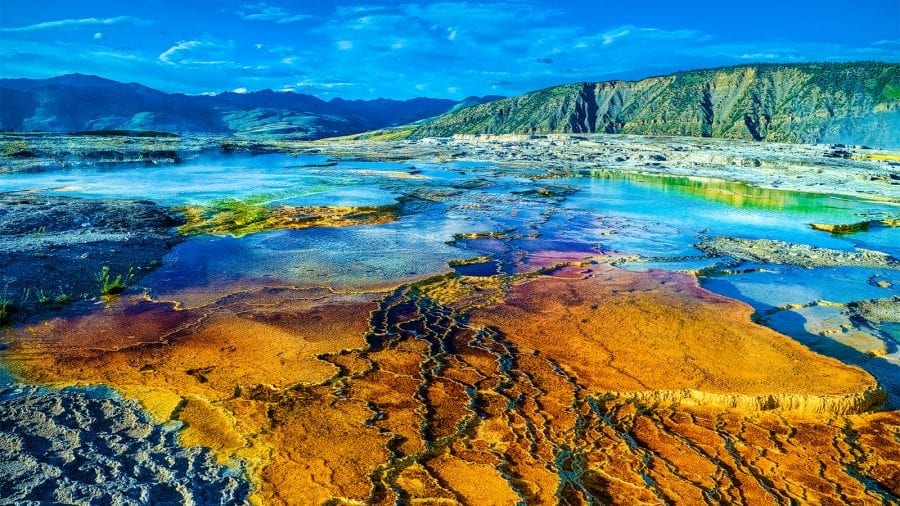
Old Faithful
It’s easily the number one attraction in the park and what the park is best known for, so it’s tough to make a trip to Yellowstone National Park without visiting Old Faithful. The famous geyser is located in Upper Geyser Basin in the park’s southwest section.
The geyser erupts roughly every 90 minutes with each eruption reaching a height of between 100 and 180 feet and lasting about 1.5 to 5 minutes. The attraction has parking and features a large viewing area with bench seating.
Just keep in mind that Old Faithful is one of the most famous natural attractions in the country, so plan your visit wisely to avoid crowds.
Yellowstone Grand Canyon
If you Google pictures of Yellowstone National Park, you’ll more than likely see more shots of Yellowstone Grand Canyon than any other feature in the park. The feature typifies all that the park has to offer.
Puffs of steam on the canyon walls show clear signs of the park’s geothermal activity while the Yellowstone River’s upper and lower falls display that grandeur that demonstrates just why President Ulysees S. Grant made this the first national park in the world.
The canyon can be explored via a variety of hiking trails of varying difficult level or by driving par roads that skirt its rims.
Mammoth Hot Springs
This massive system of hot spring was created more than a thousand years ago on a hill of travertine, a type of limestone. This attraction features numerous activities. Explore the hot springs terraces, a system of boardwalks that goes over and round the springs.
There are also drivable roads around the springs. Historic Fort Yellowstone, which operated in the 19th century is also located here. Explore the fort on your own or sign up for a guided tour.
Mammoth also features numerous hiking trails for long day hikes or shorter excursions.
Lamar Valley
You can’t visit a national park without seeing wildlife and Lamar Valley is one of the best places in the park to do it. The area along the Lamar River is often referred to as America’s Serengetit because of the large animals you can find there.
Among its residents are wolf packs, bald eagles, grizzly bears, bison, coyotes, and pronghorns.
Drive the road through the lamar valley to spot these citizens of the park. The area features numerous areas to part along the way for easy viewing. The Valley is also home to two campgrounds, which serve as two excellent basecamps for wildlife viewing excursions.
Hayden Valley
More than 40 million bison once roamed the American West before excessive hunting brought those numbers below 1,000 by the late 19th century. Those numbers have recovered significantly since then, but there are still only a few places you can go to see these majestic animals.
One of those places in Yellowstone Park and the best place to find them is in the Hayden Valley, which is located in the central part of the park. Drive through the valley and you’ll spot herds of bison as well as elk, numerous wolves and even a grizzly bear or two.
Andrew Dodson
Andrew Dodson is an avid camper who enjoys the great outdoors with his wife and two-year-old son. He resides in Colorado, where you can often find him enjoying hikes with a toddler strapped to his back and mini goldendoodle Percy nearby.
